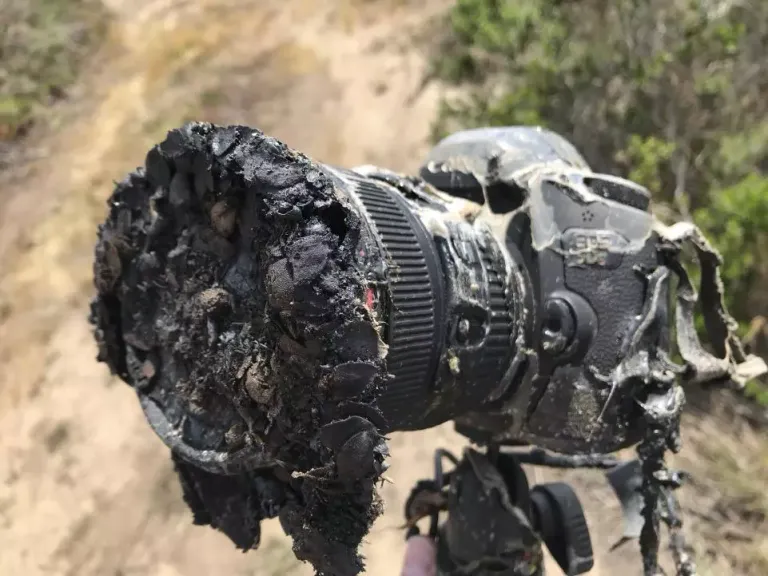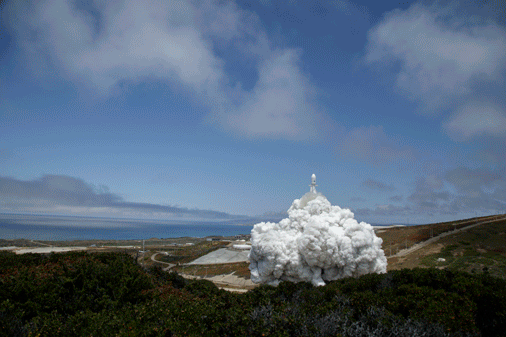
A SpaceX Falcon 9 rocket propelled seven satellites on May 22—including two from NASA—from the Vandenberg Air Force Base in California. The rocket's nine Merlin motors thundered to life, shooting the Falcon up toward space and heaving extreme warmth underneath.
A fourth of a mile away, NASA picture taker Bill Ingalls had set up a remote camera to get the activity. Be that as it may, when he came back to recover it, firefighters were pausing. What was at one time a favor camera was presently a chunk of burned and bent plastic.
"I had six [remote cameras], two outside the platform wellbeing border and four inside," Ingalls told NASA. The devastated camera was the most remote from the dispatch site, exactly 400 yards from the cushion and outside the wellbeing border. Be that as it may, Ingalls' different cameras survived the dispatch without a scratch.
In spite of the fact that its body was singed, the camera's memory card stayed unblemished. It had figured out how to safeguard the camera's last, bursting minutes, which you can find in the GIF beneath:

A bed of vegetation, NASA uncovered, was at fault for the harm. "Tragically, the dispatch began a grass fire that toasted one of the cameras outside the border," Ingalls said. The serious warmth from the dispatch set the dry California verdure land, causing a wildfire. Flares tore through the plants and inundated the camera, dissolving its plastic body.
What's left of the camera will probably wind up in plain view at NASA base camp in Washington, D.C., the organization detailed.
The Falcon 9 was conveying two NASA Grace-FO mission satellites, among others. Short for Gravity Recovery and Climate Experiment Follow-On, Grace-FO will track how masses on Earth are moving around the planet. As a rule, this mass will be water, as lakes, streams, ice sheets and ocean levels, for instance. The Grace-FO, a joint wander with the German Research Center for Geosciences, proceeds with crafted by the first Grace mission.
Exactly :D